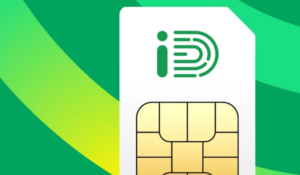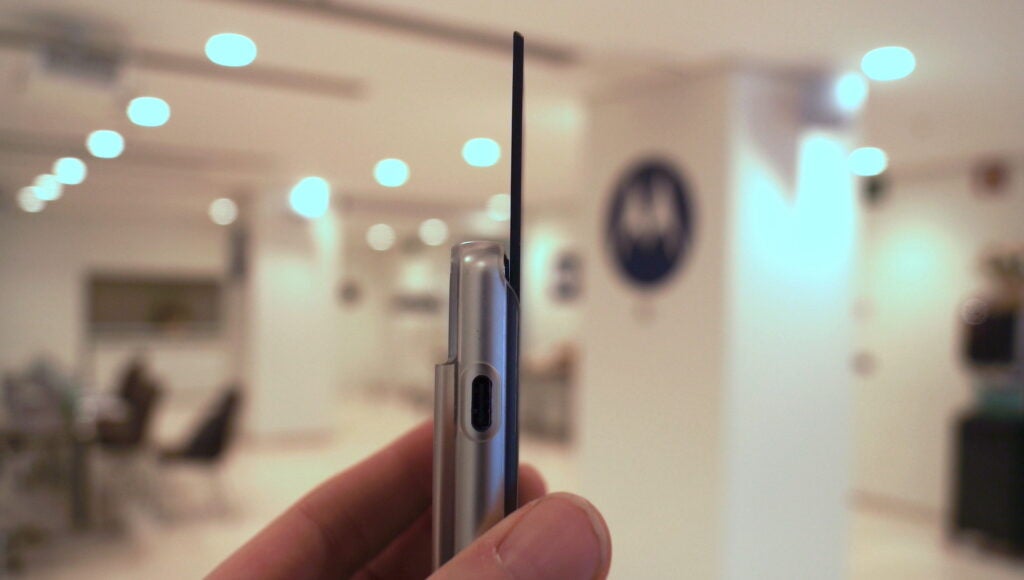Have you ever thought about having a transparent phone? No, no, I’m not talking about mobile upstart Nothing and its see-through designs. I’m talking about a truly see-through phone. Lenovo revealed a transparent laptop concept at MWC 2024, and I think we’re on the way.
Now, this is all a bit pie-in-the-sky, as I can’t imagine how our typical glass slabs can become completely transparent. The chips, battery, camera and other components all have to go somewhere. But, you’ve seen it in movies, right? I’m talking the communicators that are almost all see-through screen, like Tony Stark’s phone-like device in Iron Man 2. I can’t accept a world where we’re not going to reach that somehow. Let’s dive into what’s gotten my hopes up.
The Lenovo ThinkBook Transparent Laptop Concept
Unfortunately, the images I’ve taken of the Lenovo transparent laptop at MWC 2024 really don’t do it justice, it is not a device that likes its picture taken. But, I’m sharing them anyway. As you can see, it does what it says on the tin. The top half of this laptop is a 720p 17.3-inch Micro LED display that can reach an eye-scorching (that’s hyperbole, don’t worry) 1000 nits. Then, the bottom half is a piece of glass that provides a touchscreen-esque keyboard and trackpad. It can switch to be a canvas for drawing too. There’s no haptic feedback so it’s rather unsatisfying to use. Regardless, the top half is the real interesting part of this laptop.

40GB SIM-only contract for £4 a month. Not a typo.
The iD Mobile network offers some shockingly great deals, but this 40GB contract with 50% cashback might be the best we’ve seen.
- Mobiles UK
- 50% cash back
- £4 a month
What made me start thinking about what this technology could mean for phones was the mix of arguments made for its existence as a laptop. Here’s what Lenovo says:
The transparent screen opens up new avenues of work collaboration and efficiency by enabling the interaction with physical objects and overlaying digital information to create unique user generated content. The transparency allows it to effortlessly integrate naturally within its environment.
The second argument isn’t one I can get onboard with. Sure, a lack of opaque bezels and the display itself blocking some of the view between you and your colleagues may impact your interaction a tad, but I’m not sure a transparent display would make much of a difference. If anything, seeing the back of your on-display content as you chat to your workmates may provide more of a distraction.

The first point is more intriguing and it sets me on the path towards the mobile realm. During my time looking at the Lenovo ThinkBook Transparent Laptop Concept, I wasn’t graced with a demo on the “the interaction with phyisical objects and overlaying of digital information” but it’s something that would work perfectly with a mobile phone.
In a world where many of the biggest technology companies are trying to convince us to put a cornocopia of pixels on our faces inside of a cumbersome headset, why not just have us hold a display up to the world to look through when we’d like to?
AR you happy to see me?
This train of thought leads me to think about augmented reality and artificial intelligence as well. Both are key buzzwords in tech right now and manufacturers still strive to make them feel worth our cash. AR and VR often promise to transport us to different worlds or, at least, enhance the one we’re in. Then, many a presentation on AI has highlighted how it can provide information relevant to your circumstances based on key contexts you provide it, whether that’s through your data or new information you input.

So, how could we do both in a way that isn’t a chunky headband? Well, there’s that phone in your pocket. Having been inspired by the Lenovo ThinkBook Transparent Laptop Concept, I’m imagining a future where you can hold your phone up to almost anything and been provides with extra information. Think, Google Lens supercharged. See a house you like with a for sale sign outside? Hold your phone up and see the price, along with various other relevant tidbits on your phone. Want your phone to tell you what to make out of a few specific ingredients in your cupboard? Hold it up and get instant recipes.
And, maybe, your phone then asks you to interact further. You’ve got a t-shirt in your wardrobe and want to purchase something similar. Again, hold your phone over it so your camera can see it, let it provide suggestions and ask if you want to order. Love plants? This imaginary phone will tell you how often you need to water it and how much sunlight it needs when you wave your phone in front of it.

I have little idea how this phone could exist anytime soon. The internals have to go somewhere so something completely transparent seems far from feasible. But, handily, the answers might just be found nestled in the future of phones developed by Lenovo’s mobile-focused sister brand, Motorola.
In 2022, it showed off a “rollable” phone concept where the phone could extend and show off a larger display. If there’s a way to house the internals in one section of the phone while another is almost all screen, like a rollable, then this transparent phone future may not be so out of reach after all. But, we’ll have to wait and see. Until then, I’m going to imagine a world where instant context is in the palm of your hand, along with the power to seamlessly act on it.





